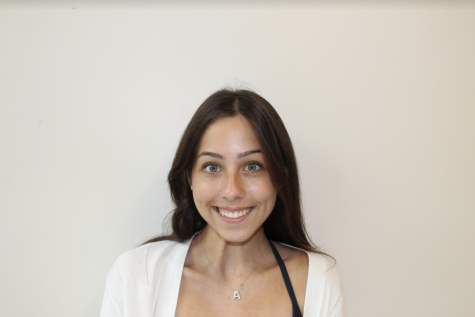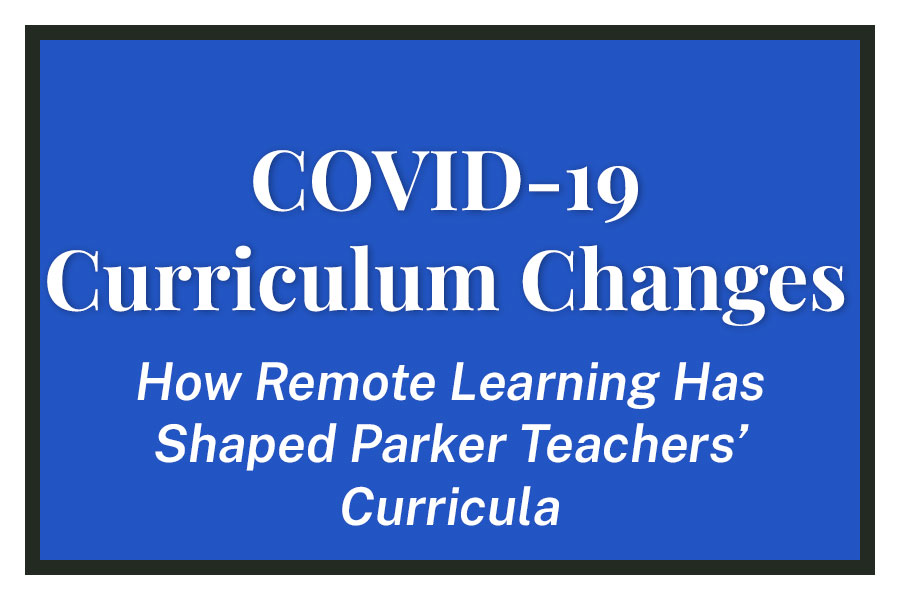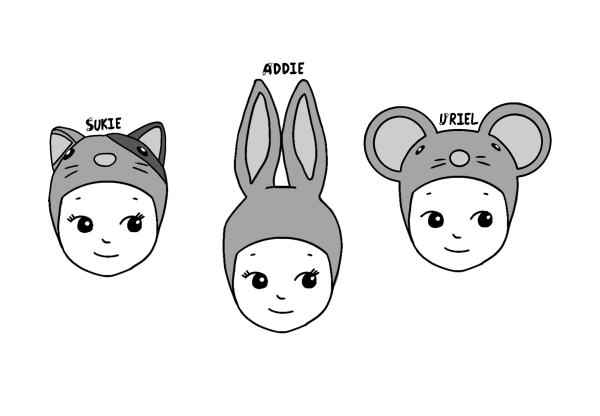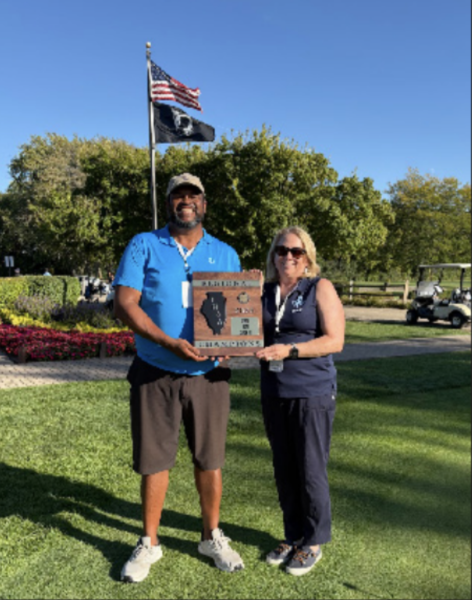COVID-19 Curriculum Changes
How Remote Learning Has Shaped Parker Teachers’ Curricula
Over recent months, faculty have had to maneuver their in-person curriculum to fit the parameters of remote learning. It has been challenging for many teachers to adjust the ways in which some of them have been teaching for years and become accustomed to unfamiliar technology.
Many upper school teachers across Parker have had to cut out crucial parts of their curriculum due to teaching on a virtual platform. Upper School History Teacher Dan Greenstone had to remove the “Trial of Socrates” project from his ninth grade world history curriculum. This project requires preparation with difficult reading that has been proven to be more challenging for students working from home.
During the 2019-20 school year, Upper School Spanish Teacher and Co-Chair of the Language and Cultural Studies Department Liz Villagomez taught one section of Spanish II. Due to the sudden switch to remote learning in March, this resulted in crucial areas of the curriculum needing to be skipped. “This meant that when students were entering their third year of Spanish, I needed to start where we had essentially left off in our level two,” Villagomez said. Students currently enrolled in Spanish III have needed to spend time learning the topics of Spanish II they had missed from the previous year.
The Rocket Lab was an activity that students enrolled in physics have done annually until the 2020-21 school year. The lab requires students to be present in a large open area, usually the turf field, and launch rockets they created in class. This lab had to be cut from the physics curriculum due to virtual learning. “Each class has something that I really do miss and cannot recreate,” Upper School Science Teacher George Austin said.
Teachers have found the components of virtual education restrict their everyday aspects of class. Regular conversations and discussions were described as being successful, although Upper School English Teacher Mike Mahany feels a need to bring new virtual experiences to the classroom space regularly. “The discussions I’ve had with my class have been fruitful and profitable, but if all we’re doing is looking at each other and talking about a text, I think that gets old,” Mahany said. “I have to continue to find different ways to approach my class every day.”
Villagomez finds it difficult to identify the students who need help in her classes. “It’s just a very different way of teaching, and from a teacher perspective one feels helpless at times because there are probably students that I need to give more support to and it’s really hard doing it virtually.”
Zoom fatigue has also been a recurring issue brought up by the Parker community due to the hours per day that one spends looking at their screen. “I think Zoom is quite tiring,” Greenstone said. “I feel Zoomed out by the end of the day while teaching in-person kind of energizes me.”
Upper School Science Teacher Kara Schupp mentioned that one of her biggest challenges with remote learning is, “the connection. It’s hard when we are having to try to connect through a screen, versus that in-person natural connection.”
Teachers have also found there are benefits of remote learning. One of these benefits is breakout rooms, a Zoom feature in which the virtual meeting host can assign separate calls for students to work in groups rather than to work together as a class. Greenstone explained that personally reviewing a student’s work has been easier working in breakout rooms. He expressed that this could be “harder in a classroom space.”
“In some ways, Zoom may be easier to work with a kid on their essay,” Greenstone said. “It’s a chance to meet with a kid quietly during class time. I have a copy of their paper on my computer, they have a copy, and I can really give them feedback that’s live, and in a way that’s private.”
Schupp has noticed that a lot of her students seem more energized for class, “I think my students are far more well-rested,” Schupp said. “I feel like my students have given me direct feedback but also said explicitly and implicitly that they’re more rested and better able to stay on top of their work.”
Austin described how the small details of a Zoom application helped him get to know his students. “Something that made my life really easy at the beginning of school was all of the names shown in the Zoom meetings.”
Some elective courses have not demanded major modification during the pandemic while others are not as compatible with Zoom learning. Art teacher Caroline Gardner teaches painting within the upper school and describes the class as not a difficult process to transition into remote learning. Gardner sent students painting kits for them to use at home that included materials such as acrylic paints, canvases, and brushes. Gardner uses a document camera to broadcast her paintings during class.
“Actually, there are some benefits to doing it digitally,” Gardner said. “I think that my students can see my demonstrations a lot better because it’s on Zoom instead of having people gather around my table. So that’s been really nice.”
Other electives such as the brand new Science and Fiction elective have been more difficult to translate to a virtual platform. This elective primarily focuses on climate change and artificial intelligence and is taught by Mahany and Upper School Science Teacher Xiao Zhang. Since this is an elective that is new to the Upper School, it has been more difficult to teach remotely. “In my other classes where I kind of know what I’m going to cover, I can get to the main things I want to get to,” Mahany said. “This is harder because we’re just trying everything out for the first time.”
Austin describes that what he misses the most about in-person learning is the face to face connections with the Parker community. “There is nothing that comes close to the human to human interaction that happens live and in-person,” Austin said. “The one thing I miss is the one thing we can’t do.”
Although despite the challenges of remote learning, Upper School French Teacher Lorin Pritikin is impressed with the way her students are approaching virtual learning during the 2020-21 school year. “I’m amazed at the resilience of my students and how well they are handling this curveball,” Pritikin said. “I’m amazed at how they’re handling this extraordinary time in their life with positive energy, and I’m amazed with their engagement.”








